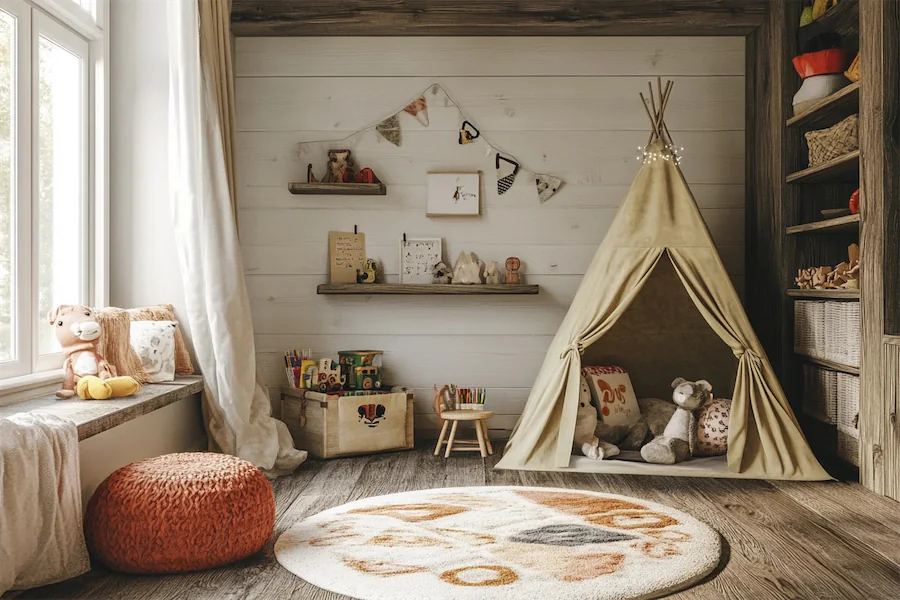Designing a rustic-themed kid’s room creates a warm and inviting environment that connects children with nature and evokes a sense of adventure. By incorporating natural materials, earthy color palettes, and handcrafted elements, you can craft a space that is both cozy and inspiring for your child.
Introduction to Rustic Kid’s Rooms
Rustic design emphasizes simplicity and natural beauty, making it an excellent choice for children’s rooms. This style focuses on creating a comfortable and nurturing atmosphere by using organic materials and textures that reflect the charm of rural living.
History and Origins of Rustic Kid’s Rooms
The rustic style draws inspiration from traditional country homes and cabins, where practicality and connection to the natural environment were paramount. In children’s spaces, this translates to rooms that are functional, durable, and rich in character, fostering a sense of security and warmth.
Key Features of Rustic Kid’s Rooms
- Natural Materials: Incorporate elements like reclaimed wood, stone, and wrought iron to add authenticity and texture to the room. For example, a wooden bed frame or a stone accent wall can serve as focal points.
- Earthy Color Palette: Utilize warm tones such as browns, beiges, and muted greens to create a soothing environment. These colors can be applied to walls, furniture, and textiles to maintain a cohesive look.
- Handcrafted Decor: Include items like knitted blankets, woven rugs, and handmade toys to add a personal touch and enhance the room’s cozy feel. These elements contribute to a homely atmosphere that is both unique and comforting.
- Vintage Accessories: Incorporate antique or distressed items, such as a rustic rocking chair or vintage wall art, to add character and a sense of history to the space. These pieces can serve as conversation starters and add depth to the room’s design.
Applications of Rustic Kid’s Rooms
- Sleeping Area: A sturdy wooden bed with a simple design, complemented by soft, natural-fiber bedding, creates a comfortable and inviting place for rest. Adding a canopy or draped fabric can introduce a whimsical touch.
- Play Zone: Designate an area with a plush rug and ample floor space for play. Incorporate open shelving made of reclaimed wood to store toys and books, keeping the area organized and accessible.
- Study Corner: A rustic wooden desk paired with a comfortable chair provides a dedicated space for homework and creative activities. Ensure the area is well-lit with natural light or a vintage-style lamp to promote focus.
Considerations When Designing a Rustic Kid’s Room
- Safety: Ensure all materials and finishes are non-toxic and child-friendly. Smooth any rough edges on wooden furniture to prevent splinters, and secure heavy items to the wall to prevent tipping.
- Durability: Choose sturdy furniture and materials that can withstand the wear and tear of daily use, ensuring the room remains functional and attractive as the child grows.
- Personalization: Incorporate elements that reflect your child’s interests, such as nature-themed wall decals or animal motifs, to make the space uniquely theirs. This personalization fosters a sense of ownership and comfort.
Conclusion
A rustic-themed kid’s room combines natural elements with functional design to create a space that is both charming and practical. By focusing on simplicity, durability, and personal touches, you can design a room that nurtures your child’s development and imagination.
